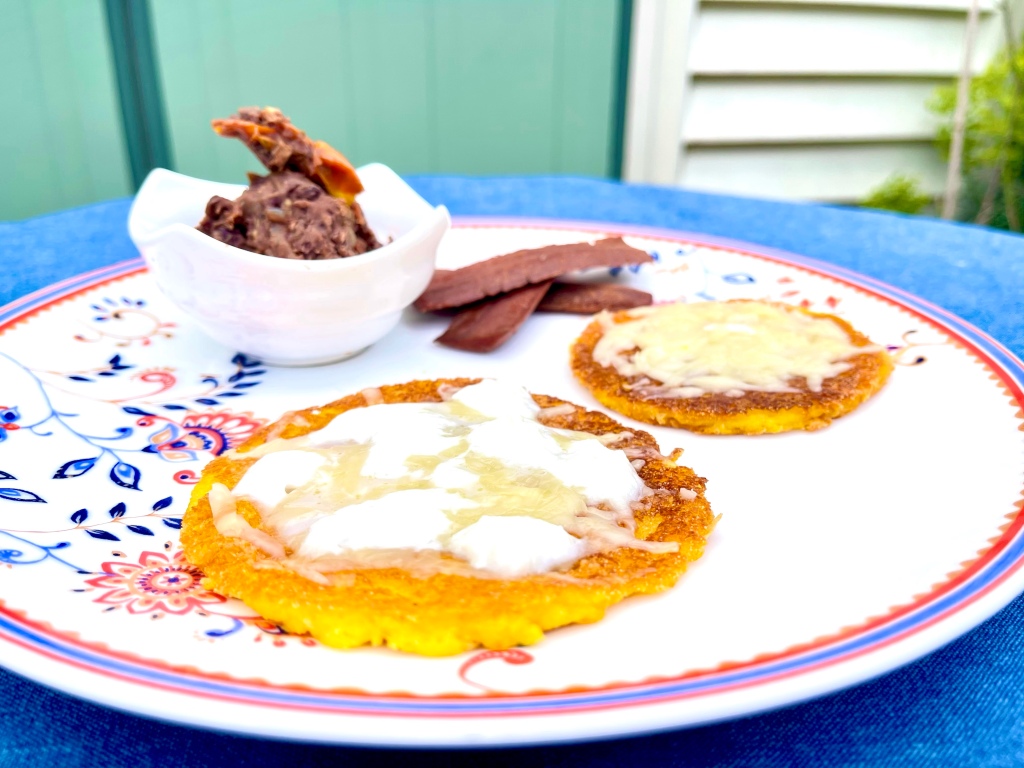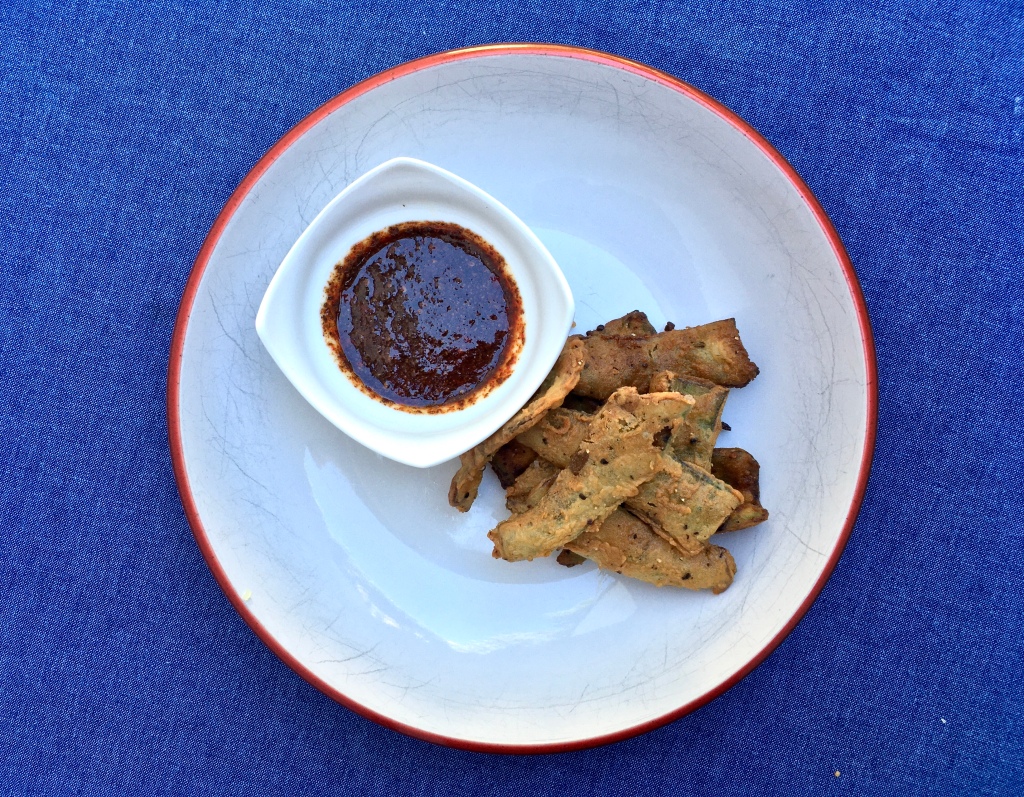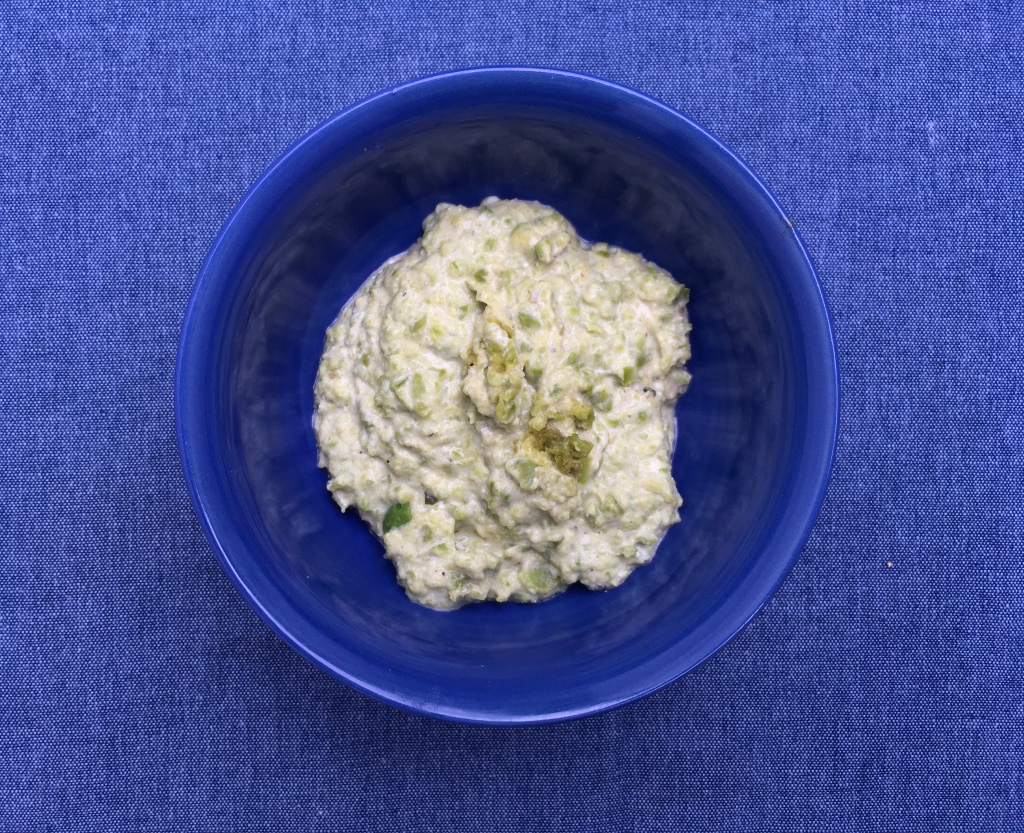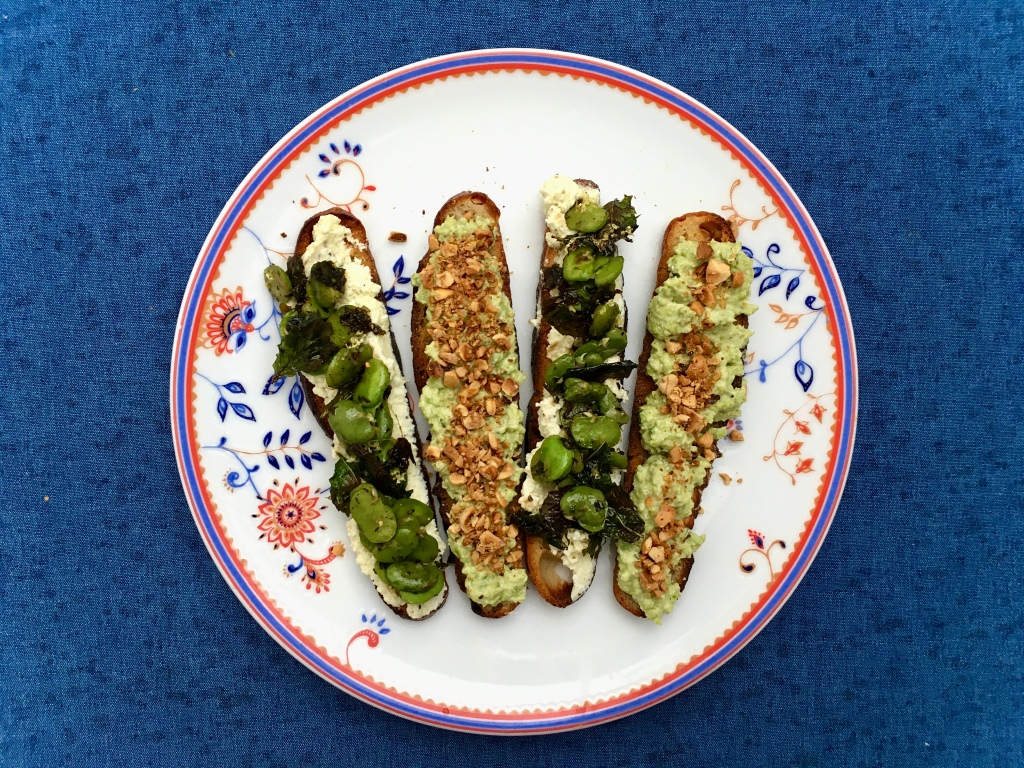Vegetarian
USE-WHAT-YOU-HAVE MOUSSAKÁ
As a person who grew up in Greece I get asked for Moussaka recipes all the time. Moussaká is really as diverse as each household. Go to http://www.instagram.com/lias_kitchen to read what differentiates Moussaká from other bakes!

In this post we want to demystify one of the most popular dishes of modern Greek cooking. My usual béchamel sauce is one where milk is flavoured with mace or nutmeg in advance and then slowly heated whilst you slowly add flour, butter and one egg. Not really a roux method but something we call Kourkoúti. But to make things simple for you we recommend you make a béchamel (or morney) sauce you know how to make and have provided a link to a BBC recipe.
In the past year I have made Moussaka with what I have. I always have uncooked lentils in my store cupboard and love using them for a vegetarian, use-what-you-have version of the dish. Use 300 to 500g of minced beef if that’s what you prefer. The authentic Moussaka in my mum’s kitchen uses two layers of aubergine but potato is just fine particularly when your vegetable box has too many potatoes you need to use up.
Enjoy our delicious recipe below!
What:
⁃ 3/4 to 1 cup or mug uncooked lentils (brown or green or black)
⁃ 1 onion, chopped
⁃ 3 allspice berries, crushed (optional)
⁃ 1/2 cup white wine
⁃ 3 to 4 garlic cloves, finely shopped
⁃ 1 tin chopped tomatoes
⁃ 500ml hot water (2cups)
⁃ 30g chopped parsley
⁃ Bay leaf (optional)
⁃ 1 egg beaten
⁃ 1/2 cup breadcrumbs
⁃ 250g crumbled or greater goat or ewe’s cheese such as feta, Abergavenny goat, manchego, pecorino or graviera.
⁃ Salt
⁃ 1 béchamel portion of your choice
⁃ Mace + bay leaf or just grated nutmeg to flavour
⁃ Half kg potatoes or as many it takes to fill a medium baking tray, sliced in circles of 1.5 to 2cm thickness
⁃ Mix of vegetable and olive oil to shallow fry
What:
1. Soak the lentils for an hour or two (optional).
2. Start with making the lentil filling.
3. Fry the onion in 2tbsp. Olive oil with a pinch of salt for 5min.
4. Add the drained lentils, a pinch of pepper and the crashed allspice berries and fry for a couple of minutes.
5. Add the wine, stir and follow with the tinned tomatoes & hot water.
6. Add another couple of pinches of salt, the bay leaf (if using) and the chopped parsley.
7. Cover and simmer for 30.
8. Whilst the sauce is simmering make a béchamel portion of your choice and fry the potatoes till mostly cooked.
9. Use 2-3 Tbsp. Vegetable oil and 2 Tbsp. Olive oil to fry the potatoes.
10. Make sure to cool down the lentil sauce before adding the beaten egg, cheese or mix of cheeses your choice and breadcrumbs. Taste and season if necessary.
11. In a medium baking tray at least 10cm deep, layer the potatoes, the lentil sauce smoothed across the surface and then the bechamel sauce.
12. If you want sprinkle with some more breadcrumbs and cheese.
13. Bake in an 170 Celsius degree fan oven for 45 min or until golden.
ANA MARIA & JUAN’S AREPAS DE CHOCLO
This is a very special recipe shared with us by Ana & Juan, two siblings born in Colombia and now living in different parts of the world. Sharing and making recipes, such as these sweetcorn arepas (arepas de choclo), from places we call home help us feel closer to each other when we are too far to hug. Thank you Ana Maria Millan and Juan for sharing a tasty treat and transporting us to your Mum’s Colombian Kitchen table, in that flat that was bought precisely because it could fit a table large enough to gather friends and family as its focal point of togetherness. Much love and respect to Ana’s wonderful Colombian Mama and all the Mamas many of us miss from afar! Thank you to Ana who shared this recipe and her words, which make up most of this post. Ana was born in Colombia and has been living in the UK for nearly 20 years.
Arepas are a traditional food of Latin America, and they come in many varieties. Some are made with different types of corn (e.g masa harina) or rice flour. They are eaten as part of a meal or as a meal itself. This recipe is made with young sweetcorn (choclo) and a mix of flours.
Ana says, ‘I like it because it is sweet, and also because it helps me bring together some of the components of my multi-cultural family: a Colombian recipe with Dutch cheese. My husband is Dutch so we try to make the most of both worlds. Although I only started making arepas after moving to the UK, this recipe takes me home, to my mum’s kitchen. The ideal way to have these is with Colombian hot chocolate, with cheese inside (but that’s another story).’
‘For us sharing food is very important. Growing up we always had dinner together – it was the time of the day when we would sit together and talk about our day and anything that was happening. And, that is something that I do with my family too – dinnertime is family time.’

What (feeds 2)
- 2 cups or 340g sweet corn kernels (use defrosted or tinned + drained)
- ½ cup or 110g flour – use either masa harina OR gluten free flour OR a mix of gluten free and fine cornmeal ground furtner in a stone pestle or mortar
- 1 teaspoon of softened butter or coconut oil
- 4 Tbsp. or around 60ml milk (dairy or vegetable)
- Pinch of sugar
How (30min)
- Place the sweetcorn in a food processor until it is mushy, but not smooth. Some kernels should be visible.
- Heat the milk and melt the butter of choice.
- Add the flours and sugar to the blender and blend till smooth.
- The batter should look like thick porridge but it should not be too stodgy. If it is too thick, dilute it with some more milk.
- Use a large non-stick pan to fit many small pancakes or a smaller to make 2-4 large ones.
- Heat a little bit of butter until melted. Pour the mixture in small or larger circle shapes. Flatten to about 1cm thickness (not too thin but a little bit more like an American or blueberry pancake).
- Cook on low heat until it is nice and golden for about 3-5 minutes.
- Flip over carefully so it doesn’t break. Put the sliced or grated cheese on top and cook for another 3-4 minutes. You can fold in half and flip over to melt cheese further.
- Serve and enjoy.
Lia’s Tips
- My perfect Ana & Juan arepas used a mix of gluten free flour and fine cornmeal (used for cornbread) ground down further in a stone pestle and mortar.
- Gluten free flour arepas were the second best.
- Heating up the milk to melt the butter worked really well.
- After my third attempt, I realised that the best way to blend the mix well was to add all the ingredients to the blender after first blending the corn kernels
- I used round metal moulds/cooking rings to make my round arepas. It helped my shape them and spread them thinner but they were mostly 2cm thick. I made mine about 10cm wide so the recipe quantity yielded between 8-10 small arepas.
- I LOVED using oat milk and coconut oil in my arepas. Ana is right it enhances the arepa sweetness
- I LOVED Ana’s Colombian/Dutch family tradition of using Edam cheese for the filling. It’s saltiness counterbalanced the arepa sweetness perfectly.
- Torn shreds of mozzarella was the second best cheese to use.
- I didn’t always fold the arepa as mine were mostly small.
- I loved serving with vegan or crisped up real bacon. Yum!
- Yes, I did the full Colombian thing and had chocolate with those. However, sweetened milky coffee was amazing too.
Broadbean CropShare #3: Broadbean pod fries with Korean Gochugang dipping sauce
When you read our guest Broadbean Crop Share blog on Global Gardens Website News Section on 10/06/2020 you can read more about our approach to food and culinary exploration. In the past year Lia’s Kitchen has collected over fifty cook books (second hand and donations) for a shared cookbook library. When exploring what we could do with the fresh broad bean crop given to us by Global Gardens Project we turned for inspiration to these books. It was in Genevieve Taylor’s Charred that we learned how to make a dipping sauce with Korean red pepper flakes. We had to adjust the recipe to our ingredients but we want to fully credit this book for the idea and inspiration. Our Broadbean pod fries inspired by Chef Tom Hunt are gorgeous with that sauce. The only problem is you can actually eat too much and be unable to move. Our crop share recipes have taken a Wasteless approach using the whole plan from leaves, pods and beans. Enjoy!

Ingredients
- Discarded pods of 300g fresh broadbeans (used in our crisped mint broad bean crostini or creamed broadbean crostini recipes)
- 6 Tbsp. self-raising flour (GF flour works well too)
- A couple of generous pinches of salt
- 200ml milk
- Vegetable oil for deep frying
Genevieve’s Korean pepper flakes dipping sauce variation
- 3 Tbsp. soya sauce
- 1 Tbsp. Korean chilli red pepper flakes
- 1 Tbsp. sesame oil
- 2 tsp. white wine vinegar
- 1 tsp. mirin sauce
- 1 crushed garlic clove
- 1 tsp. caster sugar
- 1 Tbsp. sesame seed toasted and then ground
Method:
- Toast the sesame seeds in a non-stick pan and set aside to cool down.
- Mix all the sauce ingredients in a bowl. When the seeds are cooled grind finely in a pestle and mortar and add to the sauce. Let it sit whilst making the Broadbean pod fries.
- Place three fingers of vegetable oil in a deep pot and turn the heat up placing a lid on.
- Make sure you string the pods well when you are shelling the beans. Use a sharp knife to double string the sides of the split pod again before frying preparation.
- Cut each pod shell in 5cm long pieces.
- Mix the flour and salt well in a bowl.
- Place the milk in another bowl.
- Dust the pod shells in flour lightly on both sides. Shake flour off well.
- Swiftly dunk the floured pods in the milk and return to the flour.
- Dust in flour for the second time.
- By this time the oil should be ready for deep frying.
- Place the pods in the pot but do not cram.
- Reduce the heat and deep dry for around 4 minutes or until golden but not burnt.
- Remove with a slotted spoon
- Drizzle with the sauce or dip each fry in the sauce with every bite you take!
Broadbean CropShare #2: Creamed broad beans with yoghurt and roasted hazelnuts on crostini
This is the second recipe we are contributing to the #Stayhomeeatveg crop share by Global Gardens project. You can read Lia’s blog on Global Gardens Website News Section from 10/06/2020 where she talks about what this crop means to her and shares tips and ideas on cooking with fresh broad beans.
Creamed broad beans with yoghurt and roasted hazelnuts on crostini

You will need three crostini slices for this recipe too. For the Crostini all you need is finely sliced bread (up to 2cm) brushed with olive oil and toasted on a really hot non stick pan. Now for the topping.
What (three portions):
- 100g shelled and double podded green broad beans
- 10g butter (nearly a Tbsp)
- Pinch of salt
- 70 to 100g Greek or other yoghurt
- Savory herb leaves (optional)
How:
- Take a handful of whole hazelnuts, place in a baking tray and bake for 10 minutes on a hot oven (200 degrees Celsius). Remove to a plate and cool down.
- You will need around 300g broad beans in pods to yield 100g double podded beans.
- Remove the bean seeds from the pod. Keep the pods aside to make delicious fritters on the same day.
- Blanche the beans in boiling water for at least 3 minutes. Cool and remove the shell. Here is how to do it.
- Melt the butter in a non-stick pan, toss the split beans in with a pinch of salt and stir fry for a couple of minutes.
- Mash with a hand masher in the pan on really low heat.
- Take of the heat and whilst still warm, add the yoghurt (and savory if using) and mash to a creamy consistency.
- Peel the skin off the hazelnuts by rubbing between your hands. Roughly chop or grind.
- Place a thick layer of Fava/creamed broad beans on each crostini. Top with the hazelnuts and some freshly ground pepper if you prefer.
Broadbean CropShare #1: Crisped mint broad bean crostini with Feta mash
This week we are participating in a crop share project by Global Gardens in Cardiff. One of our director’s Lia has been given a crop of broad beans, pods/beans and leaves to cook with! She is publishing a blog about what this crop share meant to her and what to do with beans on the Global Gardens Website News Section. Here is the first recipe she made for this project.
Crisp mint broad beans with Feta mash on Crostini (for three slices)
We have been baking a lot of sourdough bread at home. When it goes stale we love slicing what is left very thinly and making crispy crostini to add seasonal toppings. For the Crostini all you need is finely sliced bread (up to 2cm) brushed with olive oil and toasted on a really hot non stick pan. Now for the topping.

Ingredients (three portions)
- 100g shelled and double podded green broad beans
- 6gr fresh mint leaves (any kind)
- 15g butter (roughly a Tbsp.)
- Pinch of salt
- 100gr Feta cheese
- 30ml Extra virgin olive oil
- ½ tsp. freshly ground pepper
Method
- For the Feta mash: mash the feta, olive oil and pepper in a bowl until creamy. Set aside.
- You will need around 300g broad beans in pods to yield 100g double podded beans.
- Remove the bean seeds from the pod. Keep the pods aside to make delicious fritters on the same day.
- Blanche the beans in boiling water for at least 3 minutes. Cool and remove the shell. Here is how to do it.
- Melt the butter in a non-stick pan .
- Before it browns add the whole (washed) mint leaves and crisp up on medium heat for a minute or two.
- Before the leaves brown add the shelled and separated beans, a pinch of salt and stir well.
- On each crostini spread a medium thick layer of the Feta mash and top with some beans.
Lime & coriander cauliflower rice
National Vegetarian Week in May 2019 coincided with a new crop of cauliflower from one of our organic vegetable suppliers, so we thought it is best to share one of our best kept secrets. Cauliflower rice is a recipe which became a regular dish in our kitchen since 2015. We decided to share this at Riverside Real Food Roath Farmers’ Market two weeks ago for one of their community events. It is an easy and quick alternative to grain rice and a great additional side dish to your dinner table. It’s versatility also makes it the perfect addition to lunch boxes, picnics and barbeque tables.

This recipe is inspired by south American and Caribbean flavours. Think lots of lime, a bunch of coriander and a combination of caramelised onion and garlic. And did we say its vegan and gluten free? Cauliflower is a wonderful vehicle of flavours and you can adjust this recipe to take other flavour notes. Other cauliflower dishes we love include the Greek steamed cauliflower salad in lemon and extra virgin olive oil, cauliflower base pizza and deep-fried cauliflower nuggets (the current vegan craze).
Ingredients
- 1 large cauliflower head, grated
- 2 Tbsp. Extra Virgin Olive Oil
- 1 large onion, chopped
- 4-5 garlic cloves, minced
- 30g coriander, chopped
- Juice of two limes
- ½ tsp pepper
- 1-1.5tsp fine sea salt ff
Preparation
- Heat the olive oil in a wide, non-stick pan. You will need your widest pan for this.
- Add the finely chopped onion with a generous pinch of salt. Lower the heat and sauté for 10-15 minutes, until the onion slightly caramelises. Don’t forget to stir occasionally to make sure the onion browns evenly.
- Cut the florets off the cauliflower and chop the stem into small chunks.
- Grate the whole cauliflower to rice grains size. The easiest way to do this is through a food processor (pulse in batches to reach the grain like consistency). But you can also grate by hand on the large side of your grater.
- Add the minced garlic to the onion stirring well and stir fry for another 2-3 minutes.
- Increase the heat to medium, add the cauliflower in three batches, stirring well to coat the cauliflower grains with the oil and onion/garlic flavour.
- After 10-15 minutes of stir frying add the lime juice and salt, stir quickly and thoroughly and remove from heat and cover.
- Add the finely chopped coriander and freshly ground pepper.
- Taste to check if you need more salt or lime.
Try making a masala cauliflower rice with a bit of chilli sauce and some chopped tomatoes. Or an Italian flavoured one with basil, garlic and parmesan. Yum!
Fáva – a velvety Greek dip
Fáva is a velvety, smooth dip very popular in the taverns and homes of Greece. Not to be confused with the fava bean or broad bean, it is usually made with yellow split peas. Occasionally it is also made with dried and broken fava beans (κουκιά) but that dish has a light, green colour instead of its usual pale, mustard-yellow. It is usually served cold with chopped onion, lemon juice and a generous drizzle of extra virgin olive oil. But mother often fed us warm fava for a filling and nutritious meal – and we loved it. My favourite fáva flavour has a Cretan inspiration. Toasted cumin seeds and fried onion flavour my fáva recipe whilst roasted tomatoes and often caramelised onions are also paired or ‘married’ with it, as the Cretans say. Fáva can be paired beautifully with lamb but also octopus. It is nutritious and filling, and an impressive alternative to Hummus.

Ingredients
- 1 cup (around 250g) yellow split peas
- 500ml vegetable stock
- 1 small onion, quartered
- 1 garlic clove, peeled
- 1 bay leaf
- ½ tsp cumin seeds
- 1 – 2 tbsp. lemon juice
- Olive oil
- Salt (optional)
- Pepper (optional)
Preparation
- Rinse the yellow split peas well and place in a sieve.
- Add enough oil to coat the base of a medium pot (2 to 3 tablespoons).
- Add the onion, garlic clove, bay leaf and cumin seeds, and stir fry for around 5 minutes till the onion slightly softens.
- Toss in the yellow split peas and coat well in the oil and flavours.
- Add the boiling hot stock and bring to a low simmer for up to 40 minutes.
- At the beginning the mixture might froth. If this happens remove the froth with a slotted spoon.
- Half an hour into cooking check whether the dish requires additional water so that it does not stick to the pan.
- When cooked the peas should be getting mushy when mixed and should not have a bite.
- Take off the heat, remove the bay leaf, add the lemon juice and cream the mixture with a hand blender.
- You can serve mixed in with roasted tomatoes and topped with caramelised onions.
Lia’s notes:
- Yellow split peas are not the same as chana daal (yellow split lentils) commonly used in Indian cooking. You can source great quality, British grown, organic peas online through hodmedods.co.uk.
- Good quality ingredients make a great dip, so as well as using Hodmedods yellow split peas, I recommend you source use good quality extra virgin olive oil for this dip. Some of my choices include Oliveology, the Olive Press in Ludlow and The Greek Secret olive oils.
The Wasteless Skordalia Bread Dip
This Wasteless dip is inspired by my Greek heritage. Skordalia is a popular dip which can be made with stale bread or potatoes. My favourite is the one using bread. It is a kind of bread sauce, brought to life by walnuts, sharp vinegar flavours, garlic and extra virgin olive oil. It is traditionally served with deep fried salt cod and once you start you can’t stop eating it. At Wasteless suppers we usually serve it with smoked paprika temperate vegetable and cucumber slices.
Ingredients
- 200g leftover bread, soaked in water and well drained
- 1 large handful walnuts
- 3 tbsp. white wine vinegar
- 1-2 garlic cloves, minced
- 60 ml extra virgin olive oil
- 1 tsp. salt
- ½ tsp. pepper (optional)
- a generous pinch of grated nutmeg (optional)
Preparation
1. Soak the bread slices with the crust in some water until soft.
2. Squeeze out the water well with your hands and place in a food processor.
3. Add the garlic cloves crushed. You can add more garlic but the longer you leave the dip in the fridge the stronger it becomes.
4. Top with the walnuts, salt and pepper/nutmeg and olive oil and blitz until lovely and creamy.
5. Taste to adjust the salt and vinegar levels. The vinegar really makes this dip special so if you feel something is missing add another teaspoon.
6. This dip is absolutely delicious with raw vegetable, as an accompaniment to salads, with tempura vegetable and fried fish (in the traditional Greek way).
Forgotten Foods – Nettle pie Video
The resurgence of nettle, wild garlic and other foraged greens cooking is a delight to me. I still think that eating and foraging wild greens is a skill that needs more nurturing to become part of our yearly eating calendar. I don’t mean that you have to see nettles on supermarket isles to be able to say they are back. I am not talking about food trends. I am talking about making wild green habit and seasonal eating more of a habit for life.
This nettle pie is a simple way to connect with wild greens that are available in abundance in your surroundings in Spring. Turn the TV off. Take a stroll into your local forest or park. Pick, cook and taste. Have a look and hopefully be inspired by this video.
#VegPower! Quick Kale spaghetti
Getting down your greens is a very important step of keeping healthy during winter! Kale is a member of the brassica family and has great nutritional value. From high levels of iron, vitamin K, C and A, to anti inflammatory benefits it’s a food both accessible, locally grown and often organic.

Kale can help you increase your greens intake in easy and tasty ways. Make a pledge now to eat more veg any time of the year. Follow the #vegpower campaign for inspiration.
Here’s an easy recipe to get you started – Kale with spaghetti. When Zöe Rozellar walked into our kitchen with this idea of cooking kale it opened so many possibilities! You can also enjoy the kale as a side, for breakfast with egg (Zöe’s favourite) or with rice/couscous/quinoa. You may also add raw or cooked mushrooms to this dish – the red elf cup mushrooms from Blaencamel market stalls were a treat with this dish.
Ingredients (2-4 portions depending on starter or main size)
- 300g organic kale
- 1Tbsp. Sesame seeds
- 250g spaghetti
- 2 garlic cloves
- 1/2 tsp. Paprika
- 1/2 tsp. Ground nutmeg or more
- Salt
- Pepper
- Olive oil
- 250g goats cheese or feta cheese
Preparation (up to 30min)
- Wash the kale, pull leaves off the harder stalk (if not tender) and drain.
- In a big baking tray dress in 1/2 tsp salt, the sesame and a couple of generous lugs of olive oil. Massage well so that oil and salt dress all leaves.
- Bring water to the boil for pasta adding salt and oil. And preheat the oven to 180 degrees.
- At the same time you start boiling the pasta, add the kale in the oven after you cover the tray tightly with aluminum foil.
- The kale should bake at least for the duration of your pasta preparation.
- Once the pasta boils and is in the colander, return the pot to heat, cover its base with olive oil and add the two cloves of garlic roughly chopped.
- Lower the heat and stir fry the garlic till softer – a couple of minutes – taking care not to burn.
- Add the paprika, nutmeg and 1/2 tsp of pepper and stir fry for about half a minute or so.
- Add the spaghetti and a pinch of salt. Toss well to dress in spices.
- Remove the kale from oven, add to pot and stir well.
- Remove dish from heat and add the crumbled cheese.
- For a vegan version add Dukkah or roasted and crushed hazelnuts instead of cheese.

